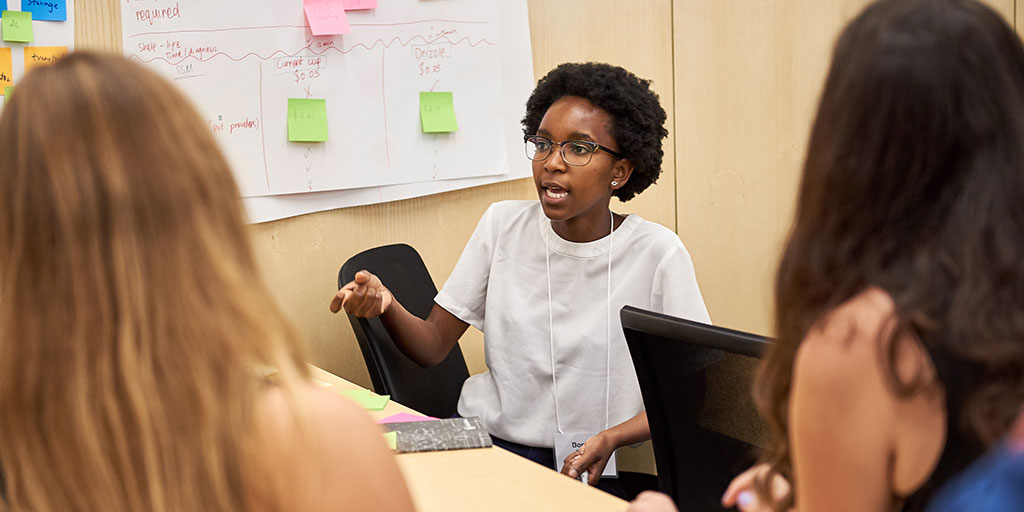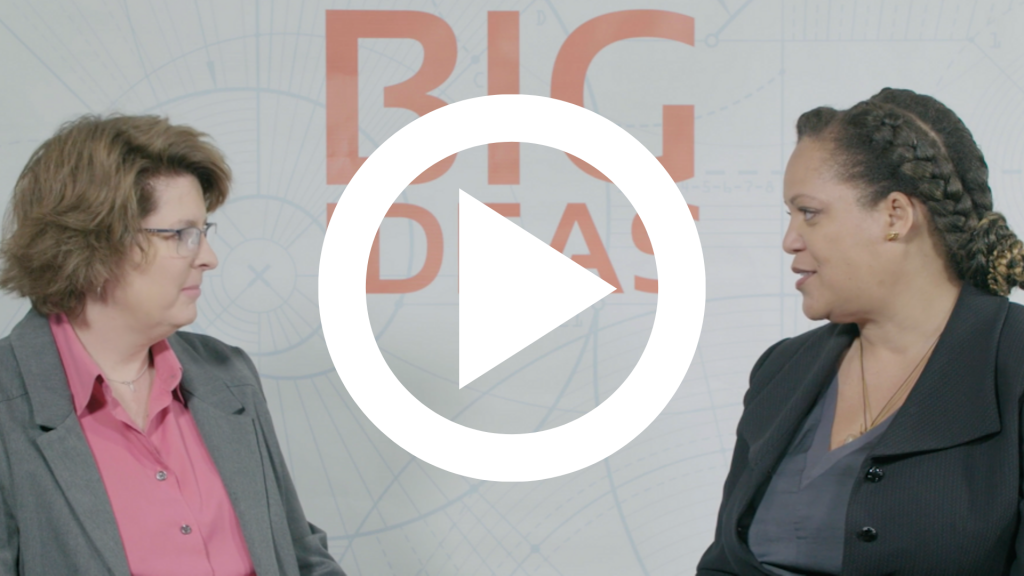
According to research and reports, STEM innovation and entrepreneurship (I&E) is male-dominated. As we’ve been paying close attention to trends related to diversity, equity, and inclusion in our field, we asked ourselves: how do we close the gender gap in STEM I&E?
To help answer the question, we’ve sought out other like-minded individuals and organizations working to ensure all students have access to resources in STEM I&E. One person leading the charge to support tomorrow’s women innovator-entrepreneurs is Dr. Isabelle Monlouis, associate director of the H.J. Russell Center for Entrepreneurship at J. Mack College of Business at Georgia State University. Monlouis received a VentureWell Faculty Grant to launch the WomenLead Innovation and Entrepreneurship program to support female students through the process of building a profitable and scalable solution to a validated customer problem.
Tara Loomis, senior program officer at VentureWell, spoke with Monlouis during our OPEN 2019 conference about the mission of the WomenLead Innovation and Entrepreneurship program and how the broader innovation and entrepreneurship community can help close the gender gap. Here is an excerpt of their conversation.
Tara Loomis: Tell us more about your program at Georgia State University.
Isabelle Monlouis: The program is a collaboration with the WomenLead Center at Georgia State. It’s designed to challenge students to use emerging technologies to solve a problem. Students have access to innovation-focused academic programs, co-curricular workshops, speaker series, and incubator programs that provide mentorship and access to funding.
Loomis: I’d like to inspire other faculty in our community to create programs like WomenLead Innovation and Entrepreneurship. Tell us more about the resources the program offers students.
Monlouis: We give students exposure to prominent thought leaders, emerging technologies, and introductions to potential mentors and partners. They may not immediately know how they’re going to apply these technologies to their idea or business, or how to leverage new connections, but that’s okay. That’s how we expand their entrepreneurial mindset.
We also create challenges that force them to work in teams. There’s something about that process that unlocks a level of leadership and team-building abilities that they didn’t know they possessed.
Loomis: What other skills do students gain from the program?
Monlouis: Confidence, collaboration, and vision. In my experience, many of my students have a tendency to do it all themselves. What I want them to understand is that entrepreneurship requires a team. In fact, I keep telling them, if you can do it yourself, your vision is probably not big enough. I try to give them goals that are too big to reach on their own. I tell them that it’s okay that you can’t do it all now. Our job is to help you grow into the person who can see far enough and attract the resources, the partners, and the funding to achieve your goals. That identity shift is actually part of that transformation process. That confidence to take on something that you don’t know how to solve.
Loomis: When you think about women pursuing a career in innovation and entrepreneurship, where do they most encounter obstacles?
Monlouis: While I acknowledge that women face many systemic challenges, one hurdle I try to help women overcome is identifying as entrepreneurs, innovators, or scientists. They often don’t fully identify with titles, and that is a barrier to their success.
In my experience, the moment you claim a title or identity, something changes. Students often start the semester barely making eye contact, let alone identifying as something that they are capable of becoming. But by the end of the semester, they’ve learned the skills and developed the confidence to identify as an entrepreneur or a leader. They’ve made things happen. They have accomplishments under their belts.
I think this self-identification is one of the ways to help them overcome both systemic and individual barriers to their success. When they say that they’re entrepreneurs, they actually access those skills and those gifts in a different way, which allows them to overcome other hurdles they may face on their journey.
Loomis: In your opinion, what will it take to close the gender gap in innovation and entrepreneurship?
Monlouis: Invite students to the table. Engage them in this discussion. Listen to them to better understand the challenges that they experience. I could give you a list of things we could do, but I think that this is where we start. We must also take into consideration that no two environments are alike. We have to start where we are and look at the challenges and opportunities of our particular situation.
Learn more about VentureWell Faculty Grants here.
